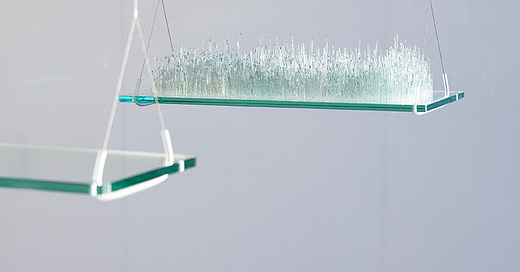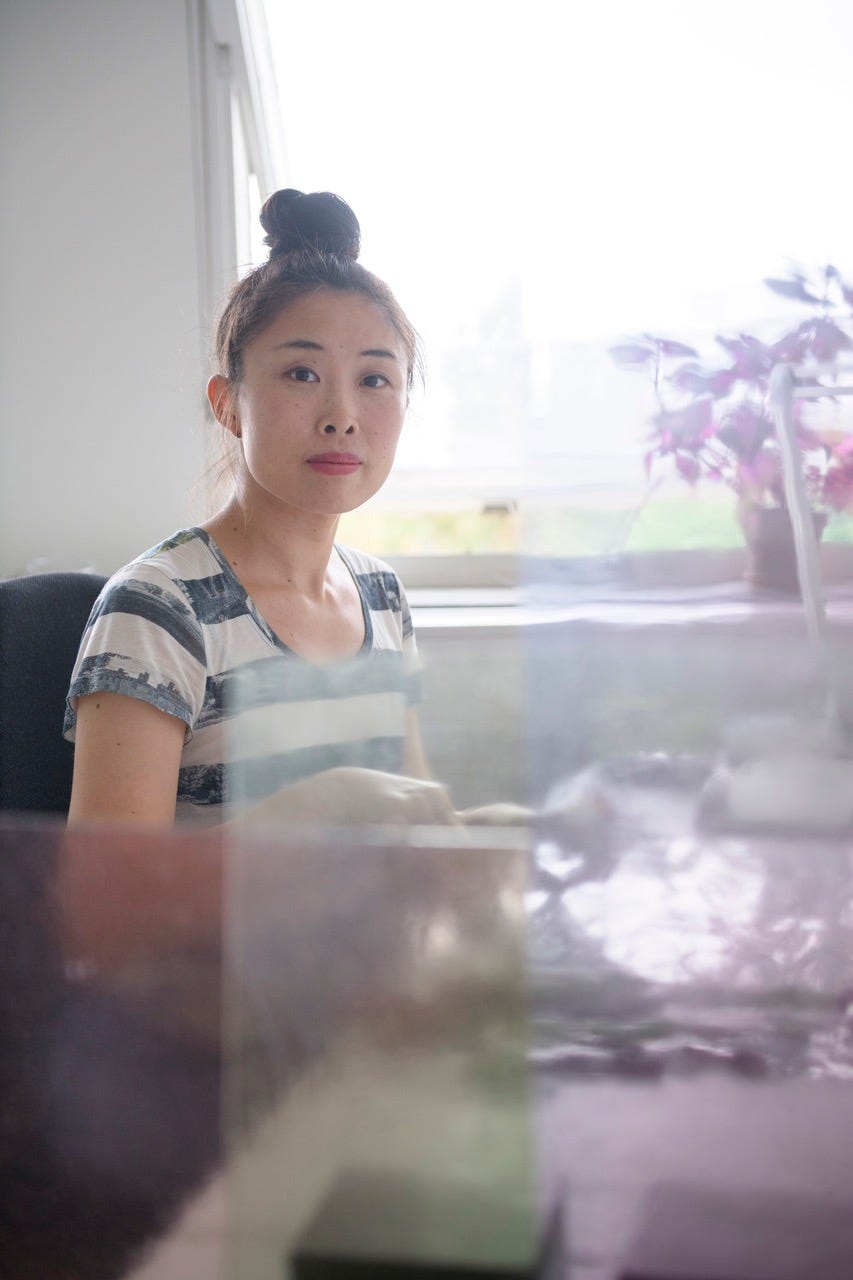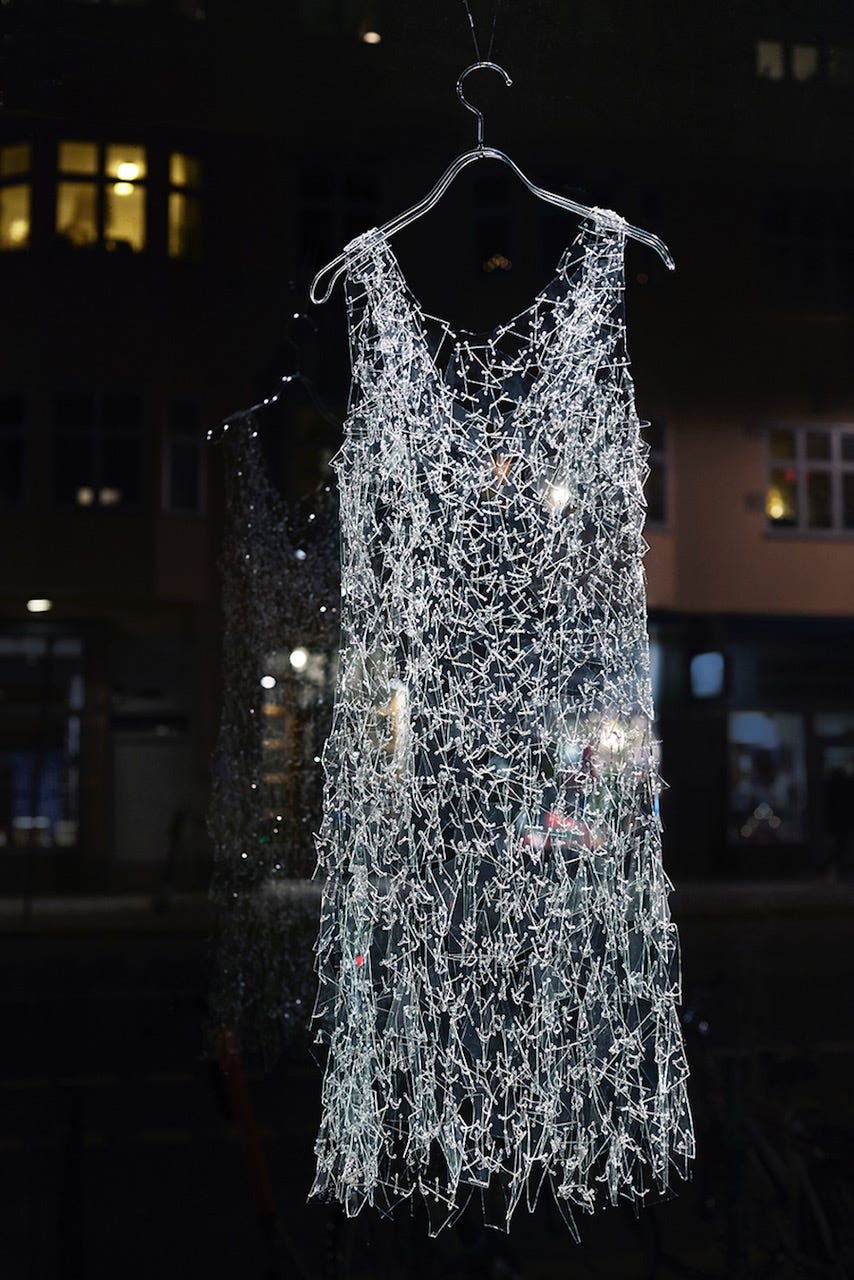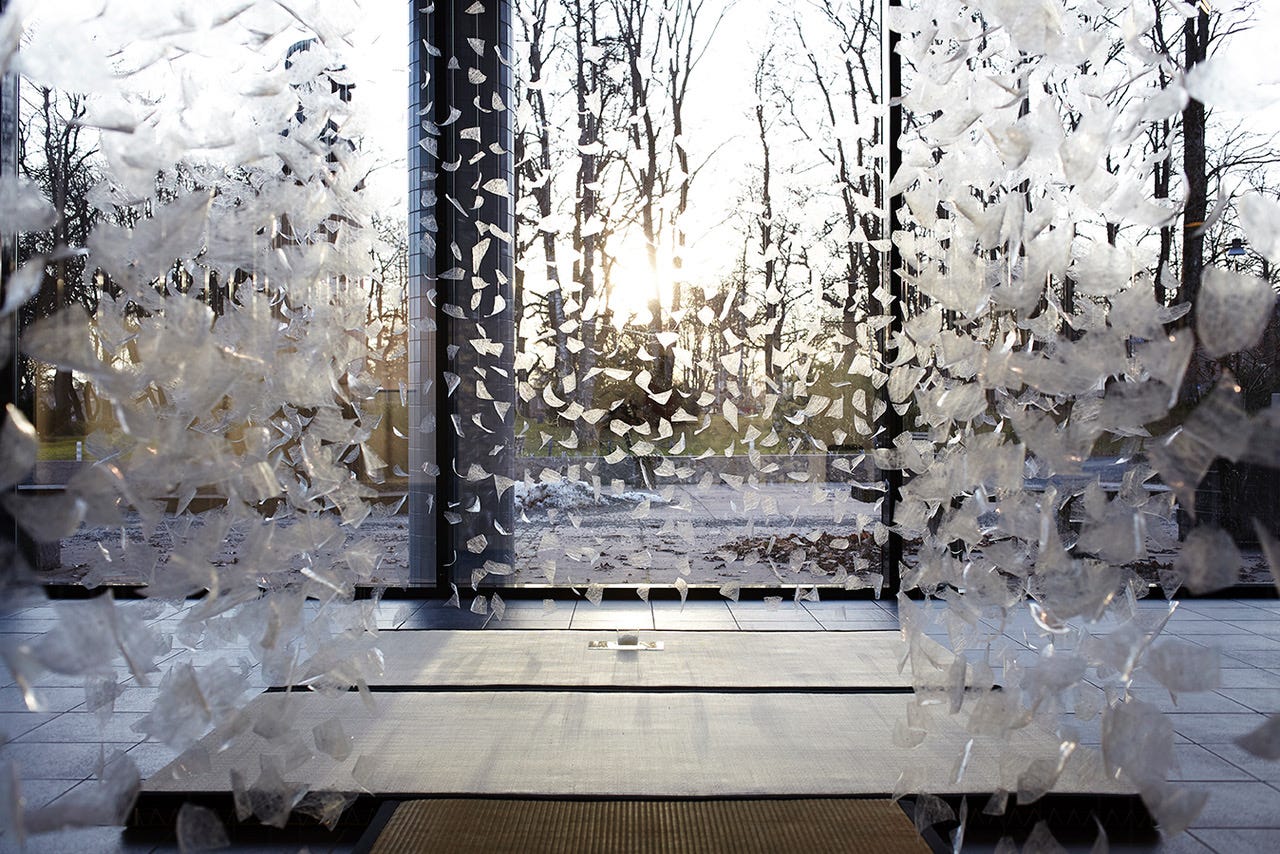We'd like to welcome you to ‘Shortcuts,' our end-of-month 6-question interview on our Substack platform, followed by a six-day daily takeover of our Instagram account by the featured artists and galleries. Please take a moment to click here to subscribe to our Instagram if you haven't already. Now, without further ado, please welcome artist Mafune Gonjo.
Transparency, fragility, and fluidity are prominent features in Mafune Gonjo's work. Who would have thought that shattered glass from trash bins and mundane materials like office tape could construct such beautiful sculptural objects?
Mafune Gonjo found her signature material because it was hard to order the right materials without knowing the language when she moved to Stockholm to study. Reconstructing abandoned fragments reflected her own journey of dismantling her old identity and reshaping it into something new. Her artworks draw inspiration from her experiences of migration as well as her upbringing in rural Japan.
Born in 1984 in Fukushima, Mafune Gonjo studied at Tama Art University in Japan (BFA 2008) and Konstfack in Sweden, focusing on ceramics and glass (MFA 2010). Her glass art is on display at the National Museum in Stockholm, the Museum of American Glass in New Jersey, and the Toyama Glass Museum in Japan.
What conversations do you hope your work will spark?
I mostly use inexpensive or once-abandoned materials like broken glass from garbage cans or ordinary office tape. They were the materials I could use during my first years in Sweden when I couldn't speak Swedish or English. Even though the process began from desperation, it created a unique style of my art and helped me keep going forward in a new country.
It's important for me that I lift up things that don't usually get attention—such as discarded glass, cheap tape, and shadows—and give them a new life as artworks. And I'm hoping that someone who faces adversity and has difficulty living in this society could get another perspective on matters or feel encouraged through my art.
Could you explain your creative process? Tell us about one of your initiatives.
I moved to Sweden in the start of my career and spent a lot of time working on a series in which I make women's apparel out of broken glass that I picked out from garbage cans. It started with the difficulties of obtaining resources due to my lack of language skills. Breaking glass and repurposing abandoned glass bits into art expressed my journey of recreating my identity and strengthening it to survive overseas.
Even though these works have been around for years, they are still meaningful to me. They include stories about the rebirth of abandoned materials, as well as stories about women who faced challenges yet found a way to persevere.
And the process of continuously breaking and recreating continues to help me deal with and conquer obstacles.
What does your studio or workspace (physical or mental) look like?
My studio features enormous south-facing windows that allow for plenty of natural light throughout the day. The changing light continually changes the appearance of my materials and their shadows, which serves as a major source of inspiration for me.
I have three stations for different tasks—two desks for two separate projects and a sofa for administration. It suits me physically and mentally to move around and work on two or three different things in parallel.
Is your art influenced by where you were born or live now?
Yes, definitely. I grew up in the countryside of Japan, surrounded by rice fields and a forest. I think one of the reasons I love broken glass is that the shapes of their edges resemble landscapes, and I never get bored. It definitely influenced my aesthetic sensibilities. However, I had a strong resistance to the culture of patriarchy there and wanted to move abroad. As I described in earlier questions, the experience of migration had a big impact on how I work now.
Who are some of your most important female (womxn) sources of inspiration and influence? (includes everyone who identifies as female or non-binary)
One is my grandma, who died in 2022 at the age of 90. She had been through a terrible war as a child, married a typical patriarch, and worked tirelessly till her children were grown. My grandfather developed Alzheimer's disease early, and she cared for him for many years. What always impressed me was her ability to find simple, humorous things that made her laugh and stay cheerful.
The other is a female jewellery designer who I assisted when I went to an art university in Japan. Before I met her, I had never seen a woman who was married, had a child, and had her own independent business. I loved how she found the solutions both in her design and business without getting help from men, and I learned that it was actually possible for women to do it all. When I write this in Sweden in 2024, it sounds like a joke, but it really shocked and inspired me!
What personally or professionally excites, worries, or keeps you connected?
One of the most thrilling times is when the exhibition is complete and I can see how my works and the environment, particularly the light, interact to make stories.
Another big motivation to work with art nowadays is to resist a society that values and puts too much emphasis on money and power. It hurts to see younger people who have a passion for art choose to study something else, which seems likely to give them more stable jobs. I strongly believe that we need more than stability and money to be content. So I want to pass on a society where art and culture matter, and it's possible to work with art sustainably in the coming generations.
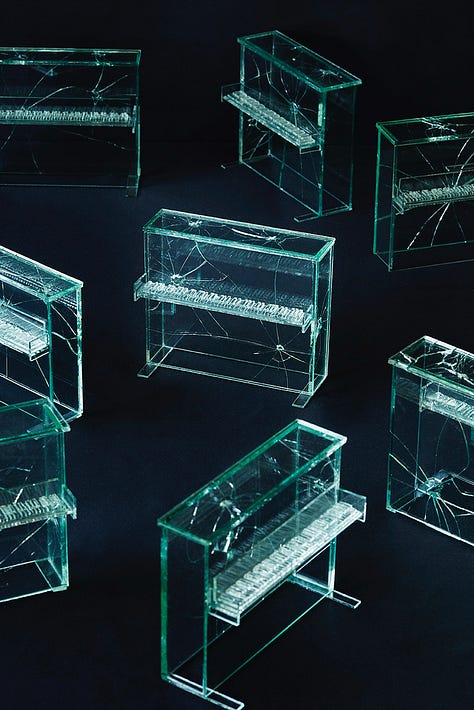
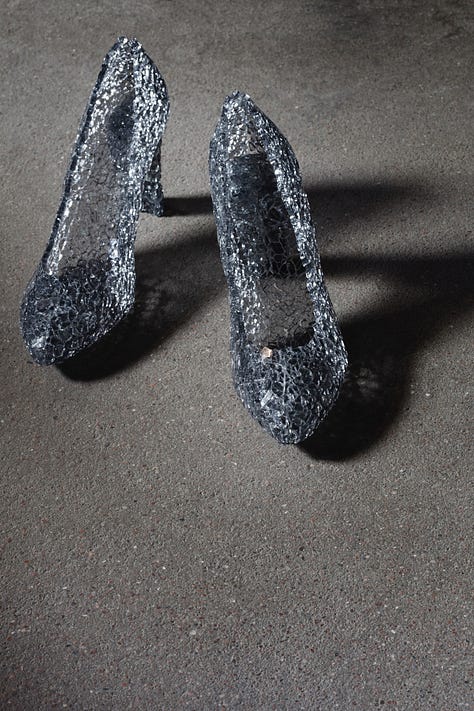
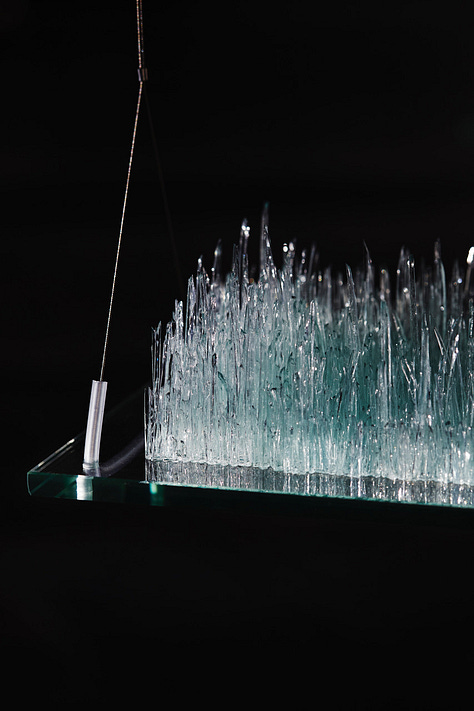
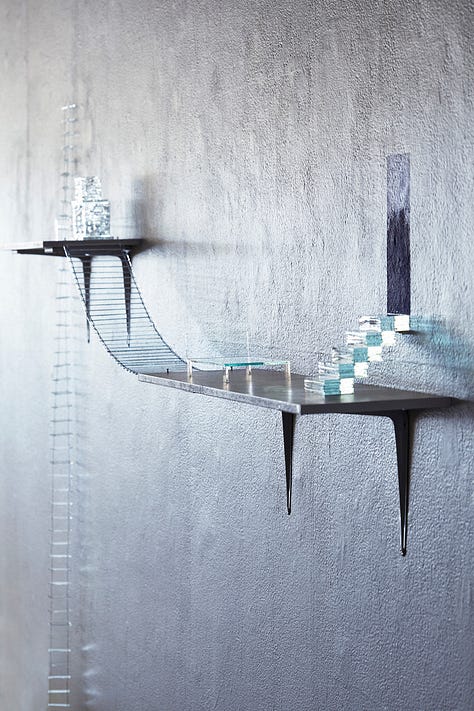
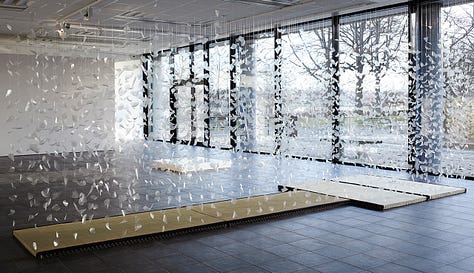
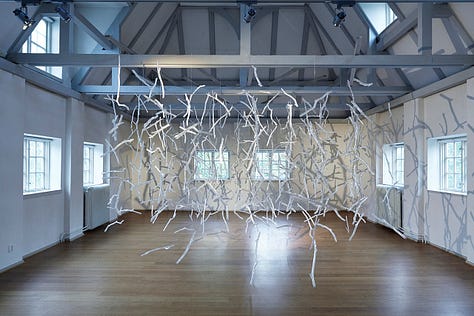
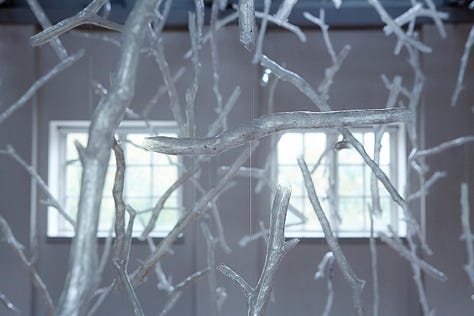
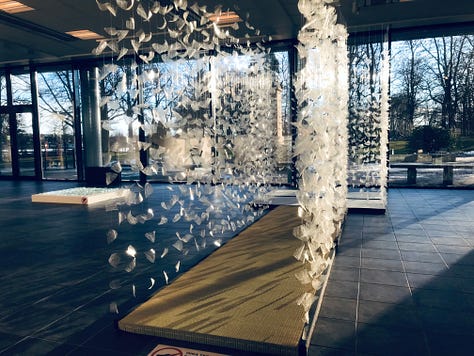
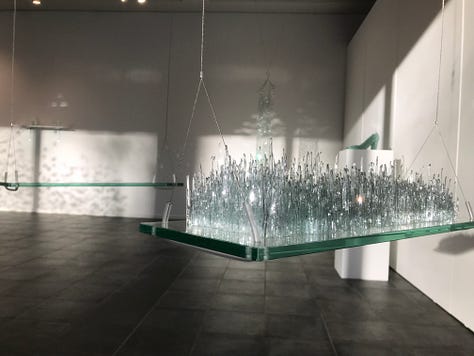
For further information about Mafune Gonjo, please visit her website and Insta pages, but first, spend the next week with Mafune by following her takeover of our Instagram page!

